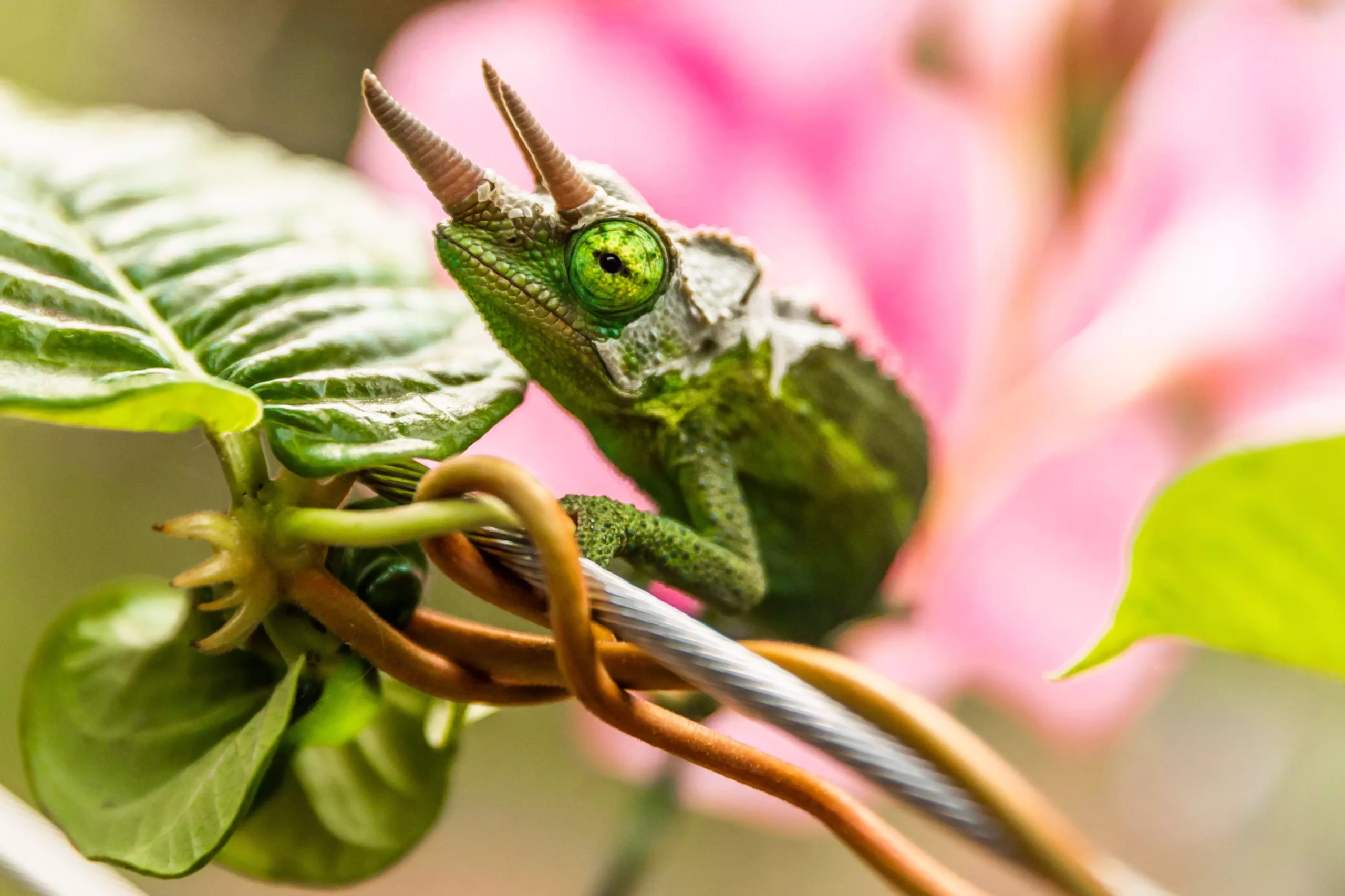Chameleons are among the most captivating reptiles, renowned not only for their vivid colors but also for their remarkable ability to alter their appearance. This color-changing capability serves multiple purposes: camouflage, temperature regulation, and communication. However, their intriguing behaviors and exotic looks come with an array of challenges for potential owners, necessitating a deep understanding and commitment to their care.
Chameleons belong to the family Chamaeleonidae, showcasing a vast range in size—some species can grow up to 27 inches long, while others may be as small as half an inch. Their life expectancy typically varies from three to a decade in captivity. Young chameleons start life as muted gray or brown, gradually developing their vibrant adult colors and the ability to morph hues as they mature around five months old. The plethora of colors displayed can include vivid greens, blues, and even blacks, each indicating different states of emotion or environmental conditions.
The color variation serves numerous functions, mainly providing a means of blending into their surroundings, thereby avoiding predators. Interestingly, the pigmentation often shifts in response to not only external factors, such as temperature and lighting, but also internal emotional states. For instance, a chameleon may display darker tones under stress while vibrant colors might indicate contentment or excitement. Understanding these signals is crucial for any chameleon owner to interpret their pet’s feelings effectively.
Creating a suitable habitat for a chameleon goes beyond mere aesthetics—it’s about replicating their natural environment. As arboreal creatures, chameleons require spacious enclosures filled with climbing opportunities, privacy, and varying temperatures to mimic their native habitats. A cage that measures at least 3x3x4 feet is recommended for larger species while ensuring good ventilation is essential.
The interior should include branches of diverse widths, allowing the chameleon to climb and explore comfortably. Enriching the habitat with live foliage not only provides natural beauty but also simulates their aesthetic surroundings; however, caution is necessary to ensure the plants are non-toxic. Ground substrates like gravel or sand should be avoided to prevent accidental ingestion while hunting.
Diet is a fundamental aspect of chameleon health. While chameleons primarily feast on insects such as crickets and mealworms, it is essential to ensure these insects are gut-loaded and supplemented with calcium before being offered to your pets. Providing a diverse selection of prey helps fulfill their dietary needs and keeps them engaged. Occasionally incorporating small amounts of leafy greens can offer nutritional benefits, though veggies that contain high oxalate levels, such as spinach, should be avoided.
One of the critical components of chameleon care is managing their hydration levels. Unlike many reptiles, chameleons rarely drink from standing water and instead absorb moisture from droplets on leaves. Therefore, a drip system or consistent misting regimen—at least twice a day—is advisable to maintain adequate humidity levels and provide hydration.
Despite their stunning appearance, chameleons are susceptible to various health issues, often linked to improper care. Common ailments include metabolic bone disease, mouth rot, and nutritional deficiencies, especially in calcium and vitamin A. Recognizing early signs of discomfort, such as lethargy or unusual behaviors, is vital. It’s always advisable to consult a veterinarian specializing in reptiles for any health concerns since many home remedies may prove ineffective or harmful.
Moreover, when selecting a pet chameleon, it is wise to choose captive-bred specimens rather than wild-caught individuals. Captive-bred chameleons are generally healthier and more accustomed to captivity, while wild-caught ones often face stress and acclimation challenges due to their past experiences.
Owning a chameleon can be a rewarding yet demanding responsibility. Their mesmerizing color-changing ability, unique behaviors, and distinct needs make them fascinating pets, but they require diligence and knowledge to thrive. Prospective chameleon owners must commit to creating an enriching environment, understanding their nutritional requirements, and monitoring their health. For those prepared for the challenge, a chameleon can be an awe-inspiring addition to the family, filled with mystery and vibrant charisma. With proper care, these enchanting creatures can lead fulfilling lives, delighting their owners with every shade of their extraordinary existence.

